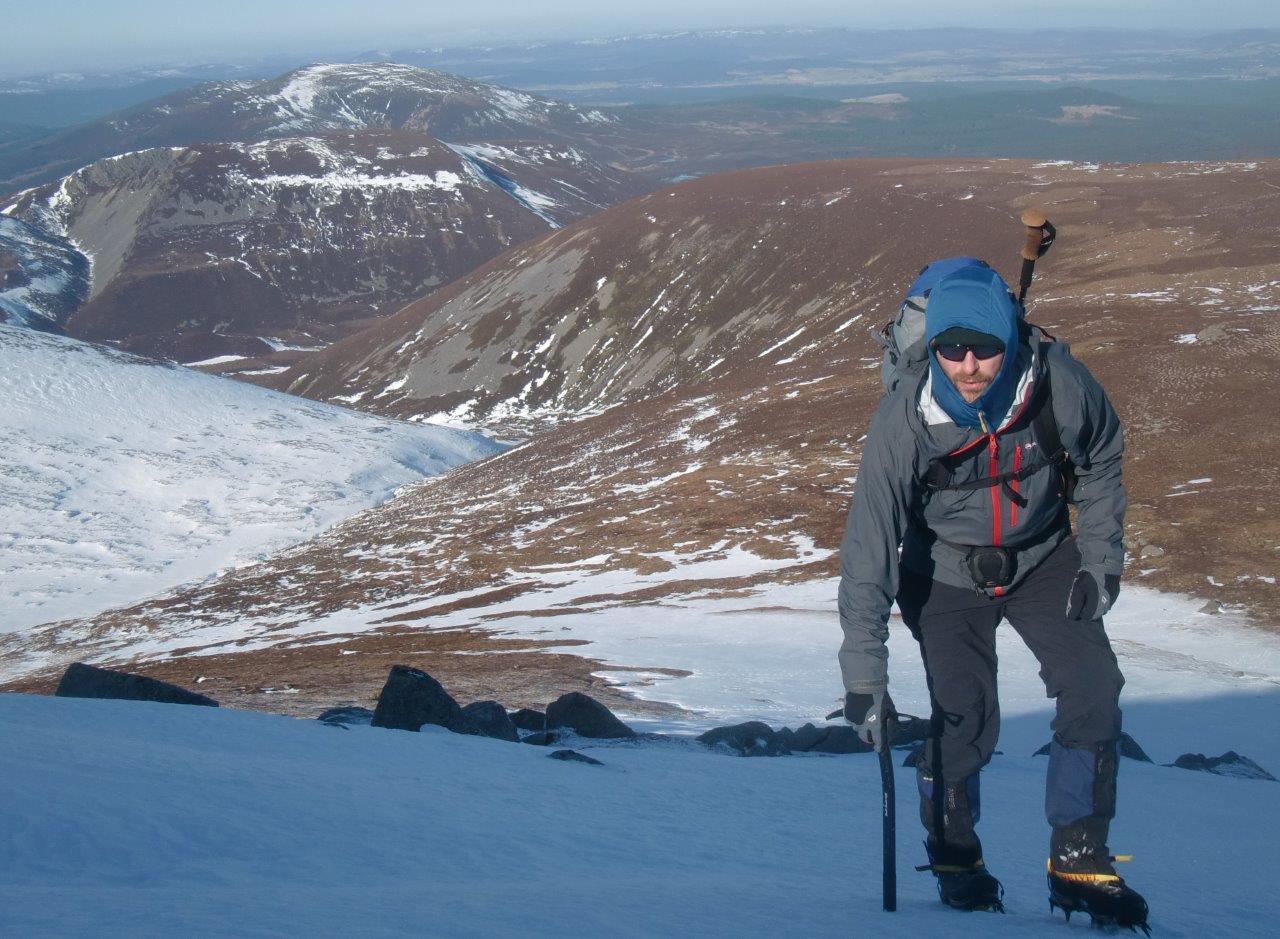
Tentacles of interconnected ice crystals reach out from every point on each frozen rock, desperately clinging on in any sanctuary that offers even a hint of shelter in this wind-blasted landscape.
These tiny reminders of the harsh environment up here on the Cairngorms plateau are mere fragments, left over from recent days when the weather has been much harsher than we are lucky enough to be experiencing today.
Despite the challenges, there is life to be found among the rock and ice in these arctic conditions. As we ascend the ridge towards the summit of Bynack More, a Munro I’ve been meaning to climb for years but have somehow never got round to until now, there are wary ptarmigan disguised in their winter white plumage.
Also dressed in seasonal white, as Peter and I take a slightly different route round one minor outcrop, a mountain hare bounds up the snowy slope in flight and soon disappears from my sight.
There are only three species in Britain that turn white in winter – the other being the stoat – and I had spotted two of them within yards of each other on this foray into the mountains.
We had set off from the road-end past Glenmore Lodge, following the right of way up to An Lochan Uaine and onto a fork where Ryvoan lies ahead and the route to Braemar via the Lairig an Laoigh to the right.
We headed right to the site of Bynack Stable, an open shelter that was blown down in 2005, where we crossed the River Nethy and looked ahead to the pointed, snow-covered summit of our day’s target.
I had expected the snow level to be much lower but even as we climbed up to the flat plateau north of our Munro there were only patches of the stuff. What was there, however, gave us a good indication of how well consolidated the snowpack was – confirming the Scottish Avalanche Information Service’s forecast for low avalanche risk.
Not feeling at my fittest, I trudged up the well-made path and found, to my surprise, the cairn that marks the route to Bynack More – which I’d expected to be well hidden under the blanket of snow – was visible, as was the path a little beyond the large snowfield that covered its initial course.
The route heads due south over an insignificant rise and we could see we were now approaching what we had really come for – an alpine-looking mountain ridge. With the sun shining, the snow conditions perfect and a flask of hot Vimto in the bag, we couldn’t really ask for more!
After hunkering down for a drink and putting our crampons on, I felt revived and was eager to get climbing. The ridge started with a steep rise and, despite zigzagging to ease the gradient, my calves were burning with the effort.
The crampons bit satisfyingly into the crisp snow, though, and gave great confidence as we rose higher, admiring the view over Strath Nethy to Cairn Gorm. Closer to hand was Bynack More’s outlying top, Bynack Beg, and we looked at the corrie between the two as an interesting alternative way off the top to return to the plateau.

Several rocky outcrops lie in wait along the north ridge and we soon learned to avoid the crest at these points so we didn’t have to walk on the boulders with our spikes. The walk up to the summit was a delight, with the wildlife to spot and the unfurling views of the mass of mountains that spread south across the whole Cairngorms range.
It looked like a winter wonderland today but this environment can be the harshest on these islands, and must be treated with the utmost respect.
Having bagged the summit, we decided to take in the other top before crossing the corrie back to the plateau and enjoying a great walk back to Glenmore through the afternoon sunshine.
Route details
Bynack More and Bynack Beg
Distance 13 miles / 21km
Terrain Winter mountaineering route – necessary skills required
Start/finish Glenmore Lodge
Map Harvey British Mountain Map, The Cairngorms; OS Explorer OL57, Cairn Gorm and Aviemore
Making the most of perfect winter conditions in the Cairngorms



